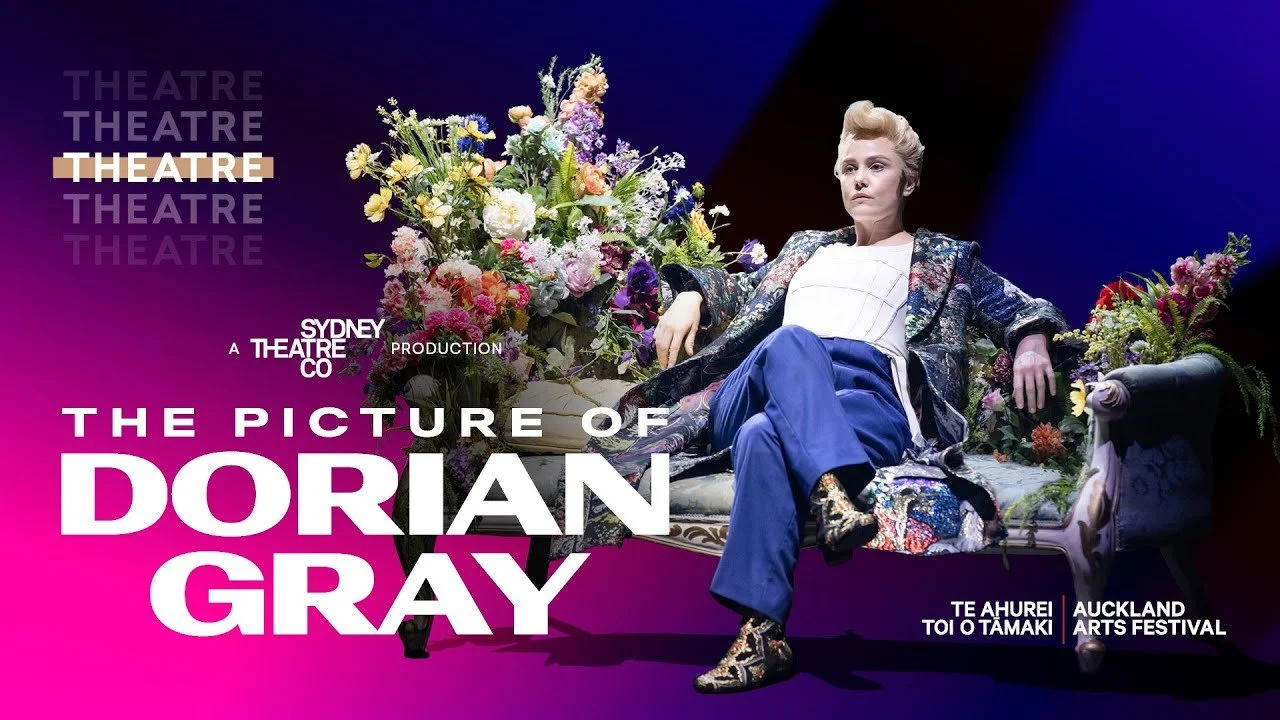THEATRE REVIEW: The Picture of Dorian Gray
22.03.2023 at Kiri Te Kanawa Theatre
The Picture of Dorian Gray by Oscar Wilde may feel like an odd choice to adapt into a one woman show. Written in 1890 in the late British Victorian era, the novel is most widely known for its underlying (and heavily censored) themes of homosexuality, and its decrying of the era’s stiff decorum and perspectives on morality. Dorian Gray has been adapted dozens of times already. How can a theatre production, with only a single actor, revive this century-old tale to suit modern audiences - an audience significantly more open and comfortable with queerness, one that is increasingly detached from Victorian ideals and, importantly, one that is losing touch with theatre as an art form? These were the odds stacked against director Kip Williams in his debut of The Picture of Dorian Gray at Sydney Theatre Company in early 2021. And the result? Perplexingly, an incredibly evocative piece of art that is undeniably situated, and even reckoning with, the 21st century and its audiences. After two years of success in Australia, Dorian Gray headlined the Auckland Arts Festival this year to raucous applause and standing ovations, and forges the path for theatre for decades to come.
One of the show’s defining elements is its incorporation of digital screens. To begin with, this was as much practical as it was creative; many dialogue scenes with large numbers of characters were solved using pre-recorded videos for actor Nikki Shiels to react to live. While at first I was sceptical of the addition of screens - after all, did we not learn after the pandemic years of digital performances that there is something irretrievably unique about a live show? - the creative use of the screens explode as Dorian Gray’s sanity unravels. Duchesses and lords start taking selfies, different camera filters accompany certain characters, and in one iconic scene, Photoshop is used live in a comedic rendition of Dorian Gray’s tortured painting. Williams creates a medium that is not quite traditional theatre, not quite film, but a bold blending of the two to create an entirely novel experience. And if there is anything we have learned from trending TikTok songs and genre-blending films such as Everything Everywhere All at Once, it is that we love a good mash-up.
“Williams creates a medium that is not quite traditional theatre, not quite film, but a bold blending of the two to create an entirely novel experience.”
Indeed, this seems to be a recurring theme throughout the play. Music that starts out as Mozart, Vivaldi and Mahler slowly transform into house music and thumping bass lines. The decadent three-piece suits worn by Lord Henry Wotton are at odds with Dorian Gray’s almost Elvis-like white and gold set near the end of the play - formal with a modern twist of flared pants, a corset over the dress shirt, and a slicked back coif. Fancy estate houses are exchanged with glittering club sets. Even time itself seems folded over; characters daintily pick up phones served on silver platters, the Duchess of Monmouth receives a Botox syringe to the powdered face whilst chatting on the chaise longue. While it is technically a one-woman show, the videographers also take part in the stage visuals, in some instances interacting with Shiels and consequently blurring the line between frontstage and backstage roles.
I saw a viewing performed by the alternate performer, Nikki Shiels, and found that she is an excellent casting choice for the role. Throughout the play, she performs 26 different characters in total, ranging from pre-recorded characters, omniscient narrators, to Dorian Gray himself. Her dynamic use of facial and vocal changes for each character work very well for the close up angles frequently used by the cameras; Lord Henry Wotton’s sly smirk and sneering eyes transforms to Basil Howard’s averted gaze and wobbling lip in a split-second. Simultaneously, Shiels takes charge of the stage dynamically, constantly moving alongside the cameras. Perhaps most surprising for me are the comedic elements of her performance. Wilde relished in exposing the ludicrousness of British high life, and Shiels certainly takes no issue in similarly satirising her characters. Lord Henry’s claim that “no woman is a genius” clearly has not met the woman acting his part. Some of Shiels’ most comedic sequences come moments after a devastating plot development, with an irony that feels unique to contemporary tastes - not unlike scrolling past a depressing news segment to find a funny skit. Williams sets a high bar for success in his adaptation - Shiels is speaking nearly non-stop for the entire show, reacting live to pre-recorded, strictly timed screens, and frequently changing set and tone. Yet Shiels takes this all into stride with apparent ease, even as we encountered technical difficulties during the show.
“…Shiels’ most comedic sequences come moments after a devastating plot development, with an irony that feels unique to contemporary tastes - not unlike scrolling past a depressing news segment to find a funny skit.”
Williams challenges us to consider perspectives we otherwise ignore, whether that is through five screens depicting Dorian Gray different angles, or generally invisible videographers dancing on stage, or modern reinventions of classical music and fashion. His and Shiels’ clear success in The Picture of Dorian Gray highlights the power of a good classic adaptation: that fundamentally, our human concerns are timeless.
■
Performer: Eryn Jean Norvill
Alternate Performer: Nikki Shiels
Adapter & Director: Kip Williams


